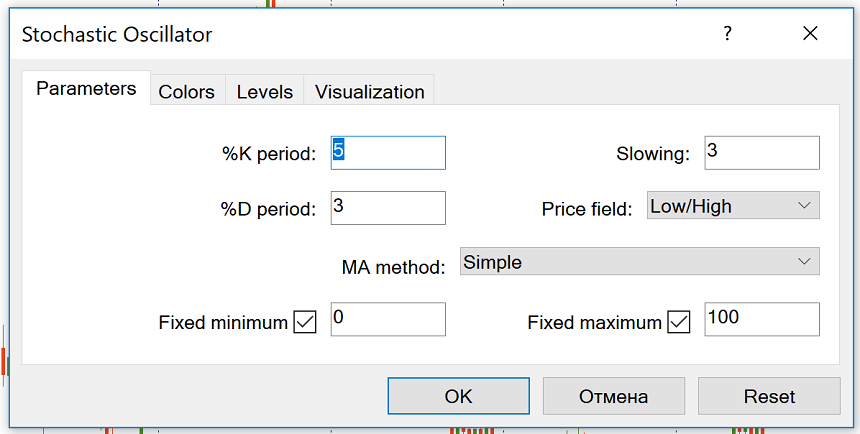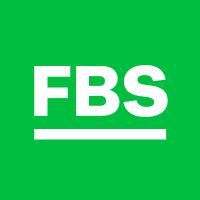Estocástico
Esta información no son consejos para inversión
El indicador Estocástico fué desarrollado por George C. Lane a finales de la década de 1950 y desde entonces es utilizado activamente por los traders de todo el mundo. Evalúa el momentum (impulso) del mercado y compara el precio de cierre con un precio durante un cierto período de tiempo. La idea detrás del indicador es que en el mercado alcista los precios se cerrarán cerca del máximo, y en un mercado bajista los precios se cerrarán cerca del mínimo. Los Estocásticos pueden mostrar cuándo el activo que operas está sobrecomprado o sobrevendido. Señala cuándo el momentum del mercado se está desacelerando. Esto, a su vez, significa que es probable un cambio en la tendencia. Como resultado, la observación del indicador puede proporcionarte ideas y señales de trading.
Cómo implementar.
El Estocástico está incluído en el set predeterminado de MetaTrader. Puedes agregarlo al gráfico haciendo click en "Insert” – “Indicators” – “Oscillators" (Insertar – Indicadores – Osciladores) y luego seleccionando "Stochastic Oscillator" (Oscilador Estocástico).

El Oscilador Estocástico se puede utilizar en todas las temporalidades. Las configuraciones predeterminadas son 5, 3, 3. Otras configuraciones comúnmente utilizadas para los Estocásticos incluyen 14, 3, 3 y 21, 5, 5. A menudo se hace referencia a los Estocásticos como Estocásticos Rápidos con un ajuste de 5, 4, Estocásticos Lentos con un ajuste de 14, 3 y Estocásticos Completos con los ajustes de 14, 3, 3. Los Estocásticos Rápidos responden más rápidamente a los cambios en el precio del mercado, mientras que los Estocásticos Lentos reducen el número de falsos cruces y, por lo tanto, filtran algunas de señales falsas. Dependerá de tí seleccionar los parámetros que desees.
Cómo usar.
El Estocástico se mide en % de 0 a 100. El indicador está representado por 2 líneas: la rápida, también llamada %K (línea verde continua) y la lenta, que se conoce como %D (línea discontinua roja). La línea %D es la Media Móvil de %K. Estas líneas se intersectan cuando el momentum cambia. La señal es comprar cuando %K (verde) cruza% D (rojo) de abajo hacia arriba. Vender cuando %K cruza %D de arriba hacia abajo. Como cualquier otro indicador, el Estocástico no da las señales que son 100% rentables. Hay 2 formas de hacer que las señales de este indicador sean más precisas: 1. Utilizar las señales generadas cuando ocurra el cruce en el área extrema (por encima de 80 para una señal de venta y por debajo de 20 para una señal de compra).

2. Tener en cuenta la tendencia en una mayor temporalidad y operar en línea con ella. Por ejemplo, si utilizas el Estocástico en H1, chequea la tendencia en H4. Si hay una fuerte tendencia al alza, no tomes las señales de venta ya que el precio podría permanecer en el área de sobrecompra durante largos períodos de tiempo. En su lugar, concéntrate en las señales de compra generadas por los Estocásticos y tendrás los beneficios del trading de tendencias.

Además, al igual que con otros osciladores, presta atención a las situaciones en que el Oscilador Estocástico esté en divergencia con el gráfico de precios. Ocurrirá una señal de venta cuando el precio alcance un nivel más alto, pero el Estocástico formará un nivel más bajo (divergencia bajista). Aparecerá una señal de compra cuando el oscilador no confirme el nuevo mínimo del precio.

También es recomendable usar el Oscilador Estocástico en combinación con otras herramientas de análisis técnico, como las Medias Móviles, Heiken Ashi, Alligator, etc.
Conclusión.
El Oscilador Estocástico es una poderosa herramienta de análisis técnico. Tiene varios propósitos y puede ser la base de un buen sistema de trading.
Otros artículos en esta sección
- Temporalidades
- Gráfico Renko
- Tipos de gráficos
- Heiken Ashi
- Política de estimulación cuantitativa
- Puntos Pivote
- Media Móvil: una manera sencilla para encontrar una tendencia
- Williams’ Percent Range (%R)
- Índice de Vigor Relativo
- Momentum
- Índice de Fuerza
- Envelopes
- Bulls Power y Bears Power
- Average True Range
- ¿Cómo operar en las decisiones del banco central?
- CCI
- Parabolic SAR
- Índice de Fuerza Relativa
- Osciladores
- ADX
- Bandas de Bollinger
- Indicadores de tendencia
- Introducción a los indicadores técnicos
- Soporte y resistencia
- Tendencia
- Análisis técnico
- Bancos Centrales: política y efectos
- Los factores fundamentales
- Análisis Fundamental
- Análisis técnico vs Análisis fundamental













